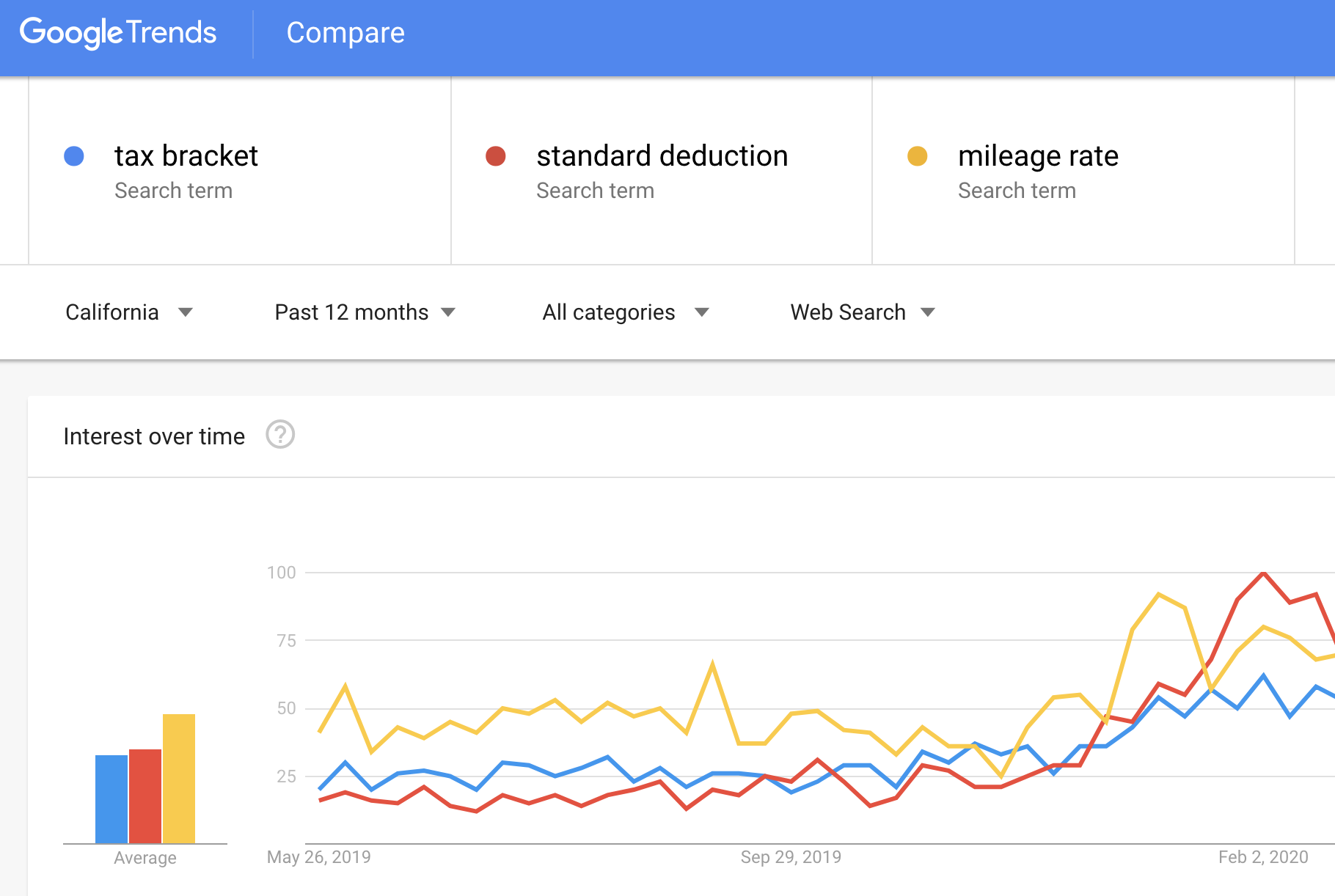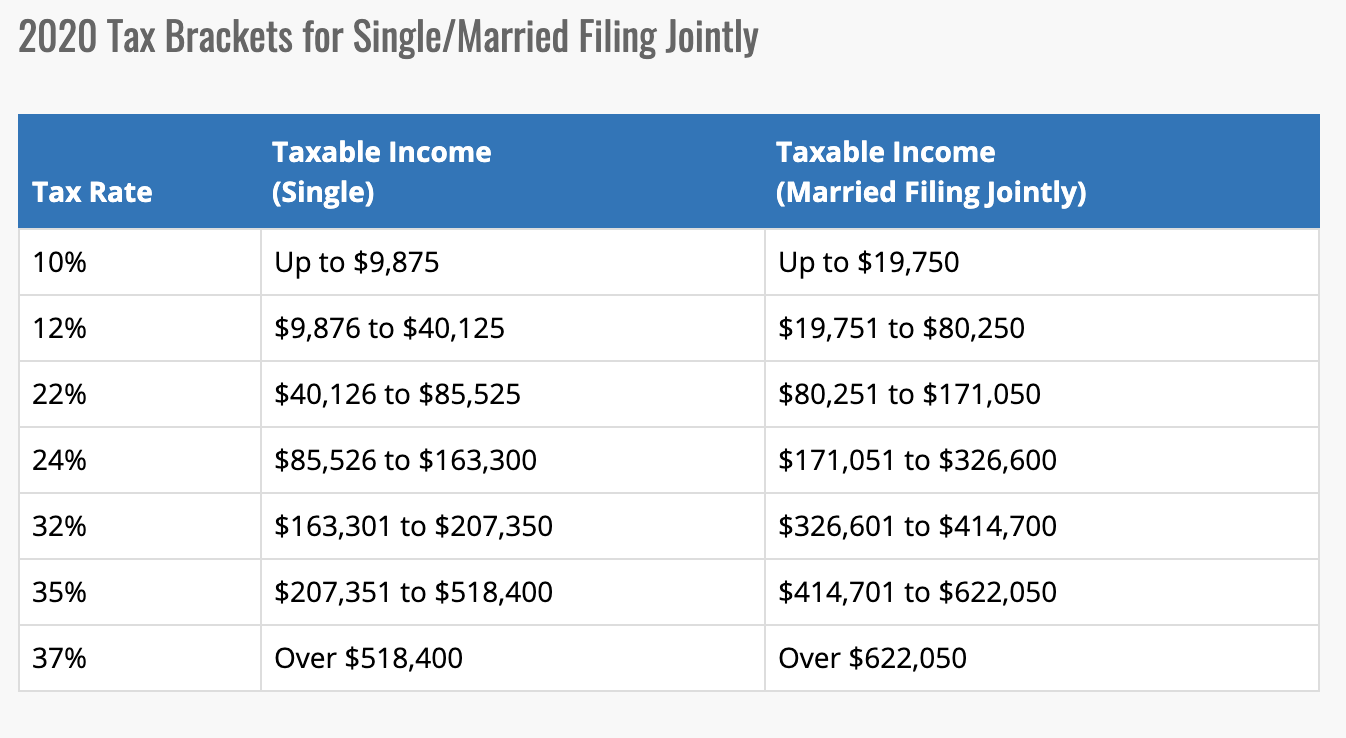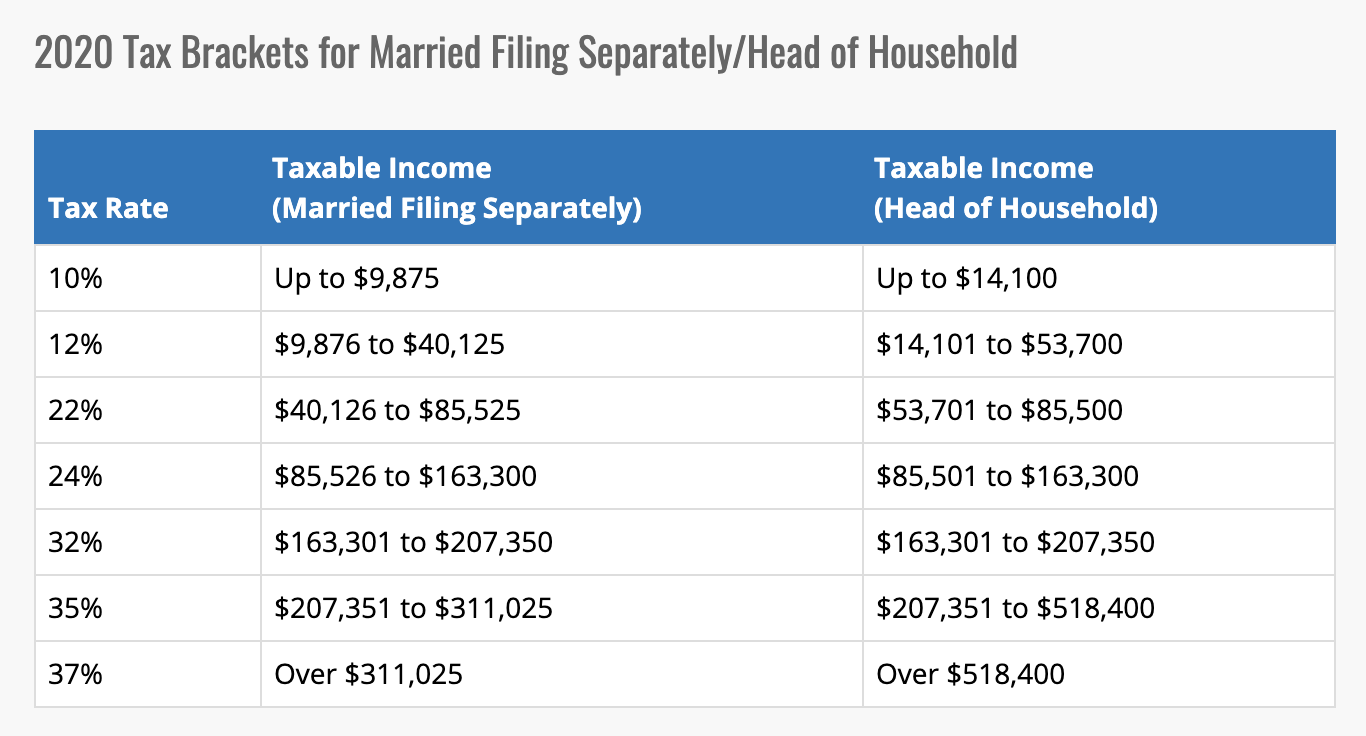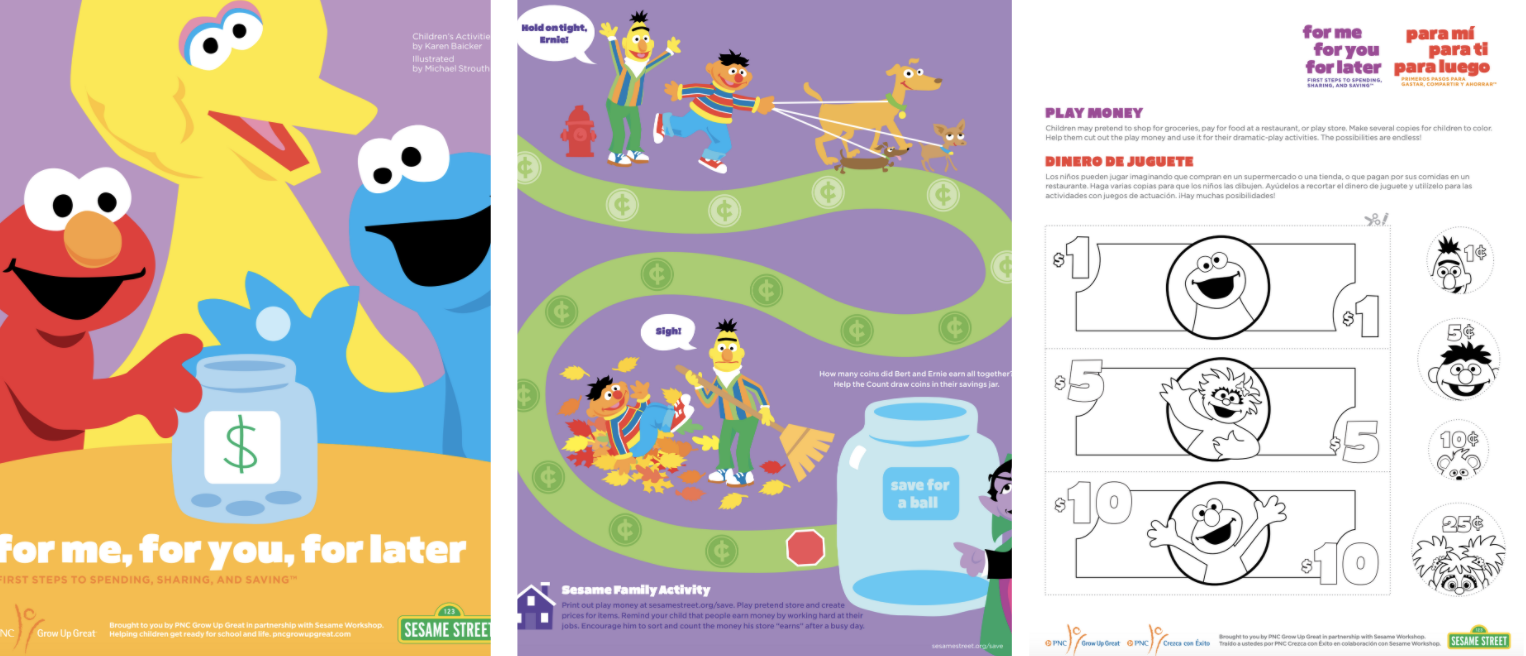According to Google Trends, around January each year, we start to see a sharp spike in tax-related searches as April 15th approaches. This type of information is insightful because our goal is to continually find ways to support our clients and make the process of filing taxes and financial planning a straightforward and enjoyable experience.
Taking a closer look, we found three common topics that are consistently searched throughout the year and wanted to provide some quick information for your reference.

____________________
QUESTION: What is the standard deduction in 2020?
Taxpayers have two options when it comes to deductions. You can either take the standard deduction, even if you have no other qualifying tax credits or itemize your deductions.
If you decide to take the standard deduction, you reduce your taxable income by a specified dollar amount. In 2020, the standard deduction increased slightly to the amounts shown below.

Source: Kiplinger
____________________
QUESTION: What is the mileage reimbursement rate in California?
We are currently living through unprecedented times where a large portion of business travel has been canceled or postponed. We’ve replaced meetings that we may have traveled to, with video conferences from our homes. According to Statista and before the stay-at-home order, Americans were taking over 470 million business trips per year!
So, it is no surprise that one topic that is consistently searched on Google throughout the year is the mileage rate for reimbursement.
The cost per mile is designated by state law and as of January 2020 is,
- 5 cents per mile driven for business use (in 2019, the rate was 58 cents per mile)
- 17 cents per mile driven for medical or moving purposes (previously 20 cents per mile)
- 14 cents per mile driven in service of charitable organizations.
The IRS bases the mileage rate on national averages and reassesses them annually.
____________________
QUESTION: What tax bracket am I in?
Another commonly searched topic is tax brackets: how they work and how to determine your tax rate.
There are seven federal income tax brackets, and the system is progressive, which means that different tax rates will apply to different portions of your income, and they only apply to your taxable income (total income minus all adjustments and deductions).
The 2020 tax brackets below apply to how much you should pay during the year 2020 when you file in 2021.
.


Source: Kiplinger

If you could go back to your childhood, what would you teach your younger self about money management and personal finances?
We have all learned lessons along the way about how we manage our money, and those lessons have shaped our financial health into adulthood. In the debate about financial education in US schools, many experts agree that learning topics like lending, credit, and budgeting early in life can make a significant impact on a person’s fiscal health before they go on to make life-defining financial decisions.
However, there are still gaps in the curriculum offered at school, and in a time when many parents became home school teachers overnight, it’s even more important to supplement the learning that kids are doing at home. The great news is that there are several valuable resources available for free to serve kids of all ages. We’ve highlighted a few of the platforms and programs that can teach kids about finances in an engaging way while also keeping them entertained through the home-school experience and beyond.
Sesame Street is known for using bright colors and engaging visuals to teach kids an array of topics. On their site, parents can download or follow a toolkit that has step-by-step guides to teaching your kids about saving, spending, and sharing. Each lesson has a video and activity sheets to make them interactive and give kids a chance to practice what they are learning through play.
As a bonus, Sesame Street also has a podcast called “Elmo’s Adventures in Spending, Saving, and Sharing,” with 13 episodes that are a quick 4-minutes each.

InCharge Financial Literacy for Kids
Best for ages 3-12
https://www.incharge.org/financial-literacy/resources-for-teachers/financial-literacy-for-kids/
InCharge Debt Solutions is a nonprofit organization that offers credit counseling and education. On their site, they have a free section dedicated to teaching financial literacy to kids and provides a selection of tools and lessons that you can utilize.
Their curriculum is targeted for ages 3-7 and 8-12, with different levels of difficulty, and their lessons feature topics for little ones like making spending decisions, creating spending plans, and earning money.
Older students can learn about allowances, spending plans, money responsibility, investing, and comparison shopping. Each lesson comes with a teacher’s guide and a student guide so to make it easy for the family to participate.

Practical Money Skills by Visa
Best for ages 4-18+
https://www.practicalmoneyskills.com/learn/life_events/family_life/educating_your_children
Practical Money Skills is a free platform by Visa that has partnered with national governments, leading consumer advocates, educators, and financial institutions to provide free interactive tools and educations resources to help individuals build their financial knowledge.
With age-appropriate games, activities, and comic books, there is truly something for every kid.
For your learners, ages 4-6, you can help guide them through concepts like saving, understanding the value of money, and comprehending the difference between wants and needs. Kids will enjoy playing free games like Peter Pig’s Money Counter to start building a solid foundation for financial comprehension.


Kids that are 7-12 years old can explore topics like making a budget, avoiding impulse buying, and tracking their purchases. Vis has partnered with Marvel to develop an exciting comic book series that teaches the importance of banking and budgeting and is available in eight different languages.

Students 13 years and older will enjoy activities and sports-themed games that teach essential life skills like using credit wisely, protecting against identity theft, and saving towards a goal. Other resources include calculators that help older kids understand how much money they might need to afford a large purchase or track everyday expenses.

No matter what stage your child might be in their path to financial literacy, experts agree that it’s never too early to lay the foundation for a successful financial future. With free resources like these that aim to use interactive lessons and gamification, it can be a compelling way to help your child succeed for years to come.
________________
Eaton’s Income Tax Services has been serving our clients for over 20 years through tax preparation, payroll services, daily money management, and more. For your consultation, contact us at 949.492.0337 or [email protected]. https://eatonstaxservices.com/

The team at Eaton’s Income Tax Services is committed to taking care of our clients and continuing to serve you through this unprecedented time. We are closely monitoring the tax-related provisions in the Coronavirus Aid, Relief, and Economic Security (CARES) Act, Congress’s gigantic economic stimulus package that the President signed into law on March 27, 2020. Below we’ve outlined the details for our clients to be aware of and if you have any additional questions, please don’t hesitate to reach out to us.
RECOVERY REBATES FOR INDIVIDUALS
To help individuals stay afloat during this time of economic uncertainty, the government will send up to $1,200 payments to eligible taxpayers and $2,400 for married couples filing joints returns. An additional $500 additional payment will be sent to taxpayers for each qualifying child dependent under age 17 (using the qualification rules under the Child Tax Credit).
Rebates are gradually phased out, at a rate of 5% of the
individual’s adjusted gross income over $75,000 (singles or marrieds filing
separately), $122,500 (head of household), and $150,000 (joint). There is no
income floor or ‘‘phase-in’’—all recipients who are under the phaseout
threshold will receive the same amounts. Tax filers must have provided, on the
relevant tax returns or other documents (see below), Social Security Numbers
(SSNs) for each family member for whom a rebate is claimed. Adoption taxpayer
identification numbers will be accepted for adopted children. SSNs are not
required for spouses of active military members. The rebates are not available
to nonresident aliens, to estates and trusts, or to individuals who themselves
could be claimed as dependents.
The rebates will be paid out in the form of checks or direct deposits. Most individuals won’t have to take any action to receive a rebate. IRS will compute the rebate based on a taxpayer’s tax year 2019 return (or tax year 2018 if no 2019 return has yet been filed). If no 2018 return has been filed, IRS will use information for 2019 provided in Form SSA-1099, Social Security Benefit Statement, or Form RRB-1099, Social Security Equivalent Benefit Statement.
Rebates are payable whether or not tax is owed. Thus, individuals who had little or no income, such as those who filed returns simply to claim the refundable earned income credit or child tax credit, qualify for a rebate.
WAIVER OF 10% EARLY DISTRIBUTION PENALTY
The additional 10% tax on early distributions from IRAs and defined contribution plans (such as 401(k) plans) is waived for distributions made between January 1 and December 31, 2020 by a person who (or whose family) is infected with the Coronavirus or who is economically harmed by the Coronavirus (a qualified individual). Penalty-free distributions are limited to $100,000, and may, subject to guidelines, be re-contributed to the plan or IRA. Income arising from the distributions is spread out over three years unless the employee elects to turn down the spread out. Employers may amend defined contribution plans to provide for these distributions. Additionally, defined contribution plans are permitted additional flexibility in the amount and repayment terms of loans to employees who are qualified individuals.
WAIVER OF REQUIRED DISTRIBUTION RULES
Required minimum distributions that otherwise would have to be made in 2020 from defined-contribution plans (such as 401(k) plans) and IRAs are waived. This includes distributions that would have been required by April 1, 2020, due to the account owner’s having turned age 70 1/2 in 2019.
CHARITABLE DEDUCTION LIBERALIZATIONS
The CARES Act makes four significant liberalizations to the rules governing charitable deductions:
- Individuals will be able to claim a $300 above-the-line deduction for cash contributions made, generally, to public charities in 2020. This rule effectively allows a limited charitable deduction to taxpayers claiming the standard deduction.
- The limitation on charitable deductions for individuals that is generally 60% of modified adjusted gross income (the contribution base) doesn’t apply to cash contributions made, generally, to public charities in 2020 (qualifying contributions). Instead, an individual’s qualifying contributions, reduced by other contributions, can be as much as 100% of the contribution base. No connection between the contributions and COVID-19 activities is required.
- Similarly, the limitation on charitable deductions for corporations that is generally 10% of (modified) taxable income doesn’t apply to qualifying contributions made in 2020. Instead, a corporation’s qualifying contributions, reduced by other contributions, can be as much as 25% of (modified) taxable income. No connection between the contributions and COVID-19 activities is required.
- For contributions of food inventory made in 2020, the deduction limitation increases from 15% to 25% of taxable income for C corporations and, for other taxpayers, from 15% to 25% of the net aggregate income from all businesses from which the contributions were made.
EXCLUSION FOR EMPLOYER PAYMENTS OF STUDENT LOANS
An employee currently may exclude $5,250 from income for benefits from an employer-sponsored educational assistance program. The CARES Act expands the definition of expenses qualifying for the exclusion to include employer payments of student loan debt made before January 1, 2021.
BREAK FOR REMOTE CARE SERVICES PROVIDED BY HIGH DEDUCTIBLE HEALTH PLANS
For plan years beginning before 2021, the CARES Act allows high deductible health plans to pay for expenses for tele-health and other remote services without regard to the deductible amount for the plan.
BREAK FOR NON-PERSCRIPTION MEDICAL PRODUCTS
For amounts paid after December 31, 2019, the CARES Act allows amounts paid from Health Savings Accounts and Archer Medical Savings Accounts to be treated as paid for medical care even if they aren’t paid under a prescription. And, amounts paid for menstrual care products are treated as amounts paid for medical care. For reimbursements after December 31, 2019, the same rules apply to Flexible Spending Arrangements and Health Reimbursement Arrangements.
Business only provisions
EMPLOYEE RETENTION CREDIT FOR EMPLOYERS
Eligible employers can qualify for a refundable credit against, generally, the employer’s 6.2% portion of the Social Security (OASDI) payroll tax (or against the Railroad Retirement tax) for 50% of certain wages (below) paid to employees during the COVID-19 crisis.
The credit is available to employers carrying on business during
2020, including non-profits (but not government entities), whose operations for
a calendar quarter have been fully or partially suspended as a result of a
government order limiting commerce, travel or group meetings. The credit is
also available to employers who have experienced a more than 50% reduction in
quarterly receipts, measured on a year-over-year basis relative to the
corresponding 2019 quarter, with the eligible quarters continuing until the
quarter after there is a quarter in which receipts are greater than 80% of the
receipts for the corresponding 2019 quarter.
For employers with more than 100 employees in 2019, the eligible
wages are wages of employees who aren’t providing services because of the
business suspension or reduction in gross receipts described above.
For employers with 100 or fewer full-time employees in 2019, all employee wages are eligible, even if employees haven’t been prevented from providing services. The credit is provided for wages and compensation, including health benefits, and is provided for the first $10,000 in eligible wages and compensation paid by the employer to an employee. Thus, the credit is a maximum of $5,000 per employee.
Wages don’t include
- Wages taken into account for purposes of the payroll credits provided by the earlier Families First Coronavirus Response Act for required paid sick leave or required paid family leave,
- Wages taken into account for the employer income tax credit for paid family and medical leave (under Code Sec. 45S) or
- Wages in a period in which an employer is allowed for an employee a work opportunity credit (under Code Sec. 51).
An employer can elect to not have the credit apply on a
quarter-by-quarter basis.
The IRS has the authority to advance payments to eligible employers and to waive penalties for employers who do not deposit applicable payroll taxes in reasonable anticipation of receiving the credit. The credit is not available to employers receiving Small Business Interruption Loans. The credit is provided for wages paid after March 12, 2020 through December 31, 2020.
DELAYED PAYMENT OF EMPLOYER PAYROLL TAXES
Taxpayers (including self-employeds) will be able to defer paying the employer portion of certain payroll taxes through the end of 2020, with all 2020 deferred amounts due in two equal installments, one at the end of 2021, the other at the end of 2022. Taxes that can be deferred include the 6.2% employer portion of the Social Security (OASDI) payroll tax and the employer and employee representative portion of Railroad Retirement taxes (that are attributable to the employer 6.2% Social Security (OASDI) rate). The relief isn’t available if the taxpayer has had debt forgiveness under the CARES Act for certain loans under the Small Business Act as modified by the CARES Act (see below). For self-employeds, the deferral applies to 50% of the Self-Employment Contributions Act tax liability (including any related estimated tax liability).
NET OPERATING LOSS LIBERALIZATIONS
The 2017 Tax Cuts and Jobs Act (the 2017 Tax Law) limited NOLs arising after 2017 to 80% of taxable income and eliminated the ability to carry NOLs back to prior tax years. For NOLs arising in tax years beginning before 2021, the CARES Act allows taxpayers to carryback 100% of NOLs to the prior five tax years, effectively delaying for carrybacks the 80% taxable income limitation and carryback prohibition until 2021.
The Act also temporarily
liberalizes the treatment of NOL carryforwards. For tax years beginning before
2021, taxpayers can take an NOL deduction equal to 100% of taxable income
(rather than the present 80% limit). For tax years beginning after 2021,
taxpayers will be eligible for:
- A 100% deduction of NOLs arising in tax years before
2018, and - A deduction limited to 80% of taxable income for NOLs
arising in tax years after 2017.
The provision also includes special rules for REITS, life insurance companies, and the Code Sec. 965 transition tax. There are also technical corrections to the 2017 Tax Law effective dates for NOL changes.
DEFERRAL OF NONCORPOATE TAXPAYER LOSS LIMITS
Deferral of noncorporate taxpayer loss
limits. The CARES Act retroactively turns off the excess active
business loss limitation rule of the TCJA in Code Sec. 461(l) by deferring its
effective date to tax years beginning after December 31, 2020 (rather than
December 31, 2017). (Under the rule, active net business losses in excess of
$250,000 ($500,000 for joint filers) are disallowed by the 2017 Tax Law and
were treated as NOL carryforwards in the following tax year.)
The CARES Act clarifies, in a technical amendment that is
retroactive, that an excess loss is treated as part of any net operating loss
for the year, but isn’t automatically carried forward to the next year. Another
technical amendment clarifies that excess business losses do not include any
deduction under Code Sec. 172 (NOL deduction) or Code Sec. 199A (qualified
business income deduction).
Still another technical amendment clarifies that business deductions and income don’t include any deductions, gross income or gain attributable to performing services as an employee. And because capital losses of non-corporations cannot offset ordinary income under the NOL rules, capital loss deductions are not taken into account in computing the Code Sec. 461(l) loss and the amount of capital gain taken into account cannot exceed the lesser of capital gain net income from a trade or business or capital gain net income.
ACCELERATION OF CORPORATE AMT LIABILITY CREDIT
The 2017 Tax Law repealed the corporate alternative minimum tax (AMT) and allowed corporations to claim outstanding AMT credits subject to certain limits for tax years before 2021, at which time any remaining AMT credit could be claimed as fully-refundable. The CARES Act allows corporations to claim 100% of AMT credits in 2019 as fully-refundable and further provides an election to accelerate the refund to 2018.
RELAXATION OF BUSINESS INTEREST DEDUCTION LIMIT
The 2017 Tax Law generally limited the amount of business interest allowed as a deduction to 30% of adjusted taxable income (ATI). The CARES Act generally allows businesses, unless they elect otherwise, to increase the interest limitation to 50% of ATI for 2019 and 2020, and to elect to use 2019 ATI in calculating their 2020 limitation. For partnerships, the 30% of ATI limit remains in place for 2019 but is 50% for 2020. However, unless a partner elects otherwise, 50% of any business interest allocated to a partner in 2019 is deductible in 2020 and not subject to the 50% (formerly 30%) ATI limitation. The remaining 50% of excess business interest from 2019 allocated to the partner is subject to the ATI limitations. Partnerships, like other businesses, may elect to use 2019 partnership ATI in calculating their 2020 limitation.
TECHNICAL CORRECTION TO RESTORE FASTER WRITE-OFFS FOR INTERIOR BUILDING IMPROVEMENTS
The CARES Act makes a technical correction to the 2017 Tax Law that retroactively treats
- A wide variety of interior, non-load-bearing building improvements (qualified improvement property (QIP)) as eligible for bonus deprecation (and hence a 100% write-off) or for treatment as 15-year MACRS property or
- If required to be treated as alternative depreciation system property, as eligible for a write-off over 20 years.
The correction of the error in the 2017 Tax Law restores the eligibility of QIP for bonus depreciation, and in giving QIP 15-year MACRS status, restores 15-year MACRS write-offs for many leasehold, restaurant, and retail improvements.
ACCELERATED PAYMENT OF CREDITS FOR REQUIRED PAID SICK LEAVE AND FAMILY LEAVE.
The CARES Act authorizes IRS broadly to allow employers an accelerated benefit of the paid sick leave and paid family leave credits allowed by the Families First Coronavirus Response Act by, for example, not requiring deposits of payroll taxes in the amount of credits earned.
PENSION FUNDING DELAY
The CARES Act gives single employer pension plan companies more time to meet their funding obligations by delaying the due date for any contribution otherwise due during 2020 until January 1, 2021. At that time, contributions due earlier will be due with interest. Also, a plan can treat its status for benefit restrictions as of December 31, 2019, as applying throughout 2020.
CERTAIN SBA LOAN DEBT FORGIVENESS ISN’T TAXABLE
Amounts of Small Business Administration Section 7(a)(36) guaranteed loans that are forgiven under the CARES Act aren’t taxable as discharge of indebtedness income if the forgiven amounts are used for one of several permitted purposes. The loans have to be made during the period beginning on February 15, 2020 and ending on June 30, 2020.
SUSPENSION OF CERTAIN ALCOHOL EXCISE TAXES
The CARES Act suspends alcohol taxes on spirits withdrawn during 2020 from a bonded premises for use in or contained in hand sanitizer produced and distributed in a manner consistent with FDA guidance related to the outbreak of virus SARSCoV- 2 or COVID-19.
SUSPENSION OF CERTAIN AVIATION TAXES
The CARES Act suspends excise taxes on air transportation of persons and of property and on the excise tax imposed on kerosene used in commercial aviation. The suspension runs from March 28, 2020, to December 31, 2020.
IRS INFORMATION SITE
Ongoing information on the IRS and tax legislation response to COVID- 19 can be found at www.irs.gov/coronavirus.
On Monday July 13 2015 Governor Jerry Brown signed Assembly Bill 304, amending the Healthy Workplaces, Healthy Families Act of 2014.
An employee who, on or after July 1, 2015, works in California for 30 or more days within a year from the beginning of employment, is entitled to paid sick leave. Employees, including part-time and temporary employees, will earn at least one hour of paid leave for every 30 hours worked. Accrual begins on the first day of employment or July 1, 2015, whichever is later.
The following poster should be displayed by all employers – Paid Sick Leave PostingTHIS ENTRY WAS POSTED IN EMPLOYER TIPS.
An enrolled agent is a person who has earned the privilege of representing taxpayers before the Internal Revenue Service by either passing a three-part comprehensive IRS test covering individual and business tax returns, or through experience as a former IRS employee. Enrolled agent status is the highest credential the IRS awards. Individuals who obtain this elite status must adhere to ethical standards and complete 72 hours of continuing education courses every three years.
Enrolled agents, like attorneys and certified public accountants (CPAs), have unlimited practice rights. This means they are unrestricted as to which taxpayers they can represent, what types of tax matters they can handle, and which IRS offices they can represent clients before.
Still what to learn more? See the Treasury Department Circular No. 230.THIS ENTRY WAS POSTED IN BUSINESS TAX RETURNS, PERSONAL TAX RETURNS AND TAGGED ENROLLED AGENT.
]]>Beginning in 2014, The Affordable Care Act (ACA) made health insurance mandatory. These new laws brought many changes that can significantly affect your tax return. You are now required to report on your tax return if you were covered by minimal essential health coverage, and if not, possibly have to pay a penalty.
If you went through an Exchange and received a subsidy from the government, you have even more reporting requirements.
Starting in 2015 there are even more changes to the ACA and reporting requirements. There will potentially be 3 tax forms you might receive, the penalty for not having insurance has gone up and there are new requirements for employers.
These are the 3 tax forms you may receive that you must bring your tax preparer to complete your 2015 tax return:
- Form 1095-A If you received a subsidy from the government for your health insurance, they will issue you a form 1095-A. You must have this form to complete your tax return. Your tax return cannot be completed without it. This form is used to calculate the Premium Tax Credit and to determine exemptions and penalties. If you did not receive this form in the mail, you can sign in to your Covered California account and there should be a copy of it in your inbox.
- Form 1095-B For your 2014 tax return, you were on the honor system for reporting on your tax return whether or not you were covered by health insurance. Starting this year, you will be issued a form 1095-B or 1095-C that will disclose your health insurance coverage. Form 1095-B is furnished to those individuals who had non-marketplace insurance or more than one source of coverage. This form will also be issued to individuals with government sponsored programs like Medicare, Medicaid and COBRA. This form is issued by the insurance company or employer who used the SHOP, small self-funded groups.
- Form 1095-CThis form is similar to the 1095-B, but this form is furnished to those who have employer-sponsored health coverage by an Applicable Large employer and is issued by your employer.
The Penalty
In addition to these new forms, the penalty for not having health insurance has gone up. Last year was the lesser of $95 per individual or 1% of your household income over the filing threshold. For tax year 2015, the penalty has gone up to the lesser of $325 per individual or 2% of your household income over the filing threshold. The penalty will continue to go up for 2016 as well.
Starting in 2015, employers who are employing a certain amount of employees, generally 50 or more full-time employees, are considered an Applicable Large Employer (ALE). These ALE’s are required to offer affordable health coverage to their full-time employees and their dependents or they will receive penalties.
Please don’t forget to bring these documents to your tax appointment and remember open enrollment begins November 1, 2015 and ends January 31, 2016!
THIS ENTRY WAS POSTED IN PERSONAL TAX RETURNS AND TAGGED AFFORDABLE CARE ACT, FORM 1095-A, FORM 1095-B, FORM 1095-C, PENALTIES.
[ Official Press Release ]
After 20 plus years on Avenida Del Mar, Eaton’s Income Tax is moving up to Pacific Point, at Pico and Amanecer.
The tax preparation office first opened back in 1989, when the Coronet department store was the biggest business on the street, and nightlife was nonexistent. It has been there while the city was transformed around it.
But the little office on Del Mar is just not enough space, not enough parking, and needs too many improvements, like air conditioning, to handle the growing business.
The demand for help with ever more complex tax filing from individuals, families, and small businesses has required Eaton’s to take on more skilled staff, expand their investment, payroll and bookkeeping services, and incorporate attorneys, consultants, and related business professionals into their operation.
“The deluge of taxes and regulations, and the promise of more to come, requires an increasing number of folks to seek professional help with their taxes and finances,” says Scott Eaton, Enrolled Agent and owner. “We are trying to do everything we can to solve their problems. So many different aspects of our lives these days, from health insurance, to home refinance or a student loan demand tax return information. It’s getting more important to get it right; that’s what we’re here for.”
Their new facility will provide more space, privacy, and comfort to clients, as well as the integration of an array of services.
“We will miss the daily interaction with all our downtown neighbors, especially the restaurants,” says Eaton; “we’ll have to keep coming back to visit the folks at Café Calypso, Tina & Vince’s, and Beachfire.”
END
Contact:
Scott Eaton, Owner
THIS ENTRY WAS POSTED IN PRESS RELEASES.
